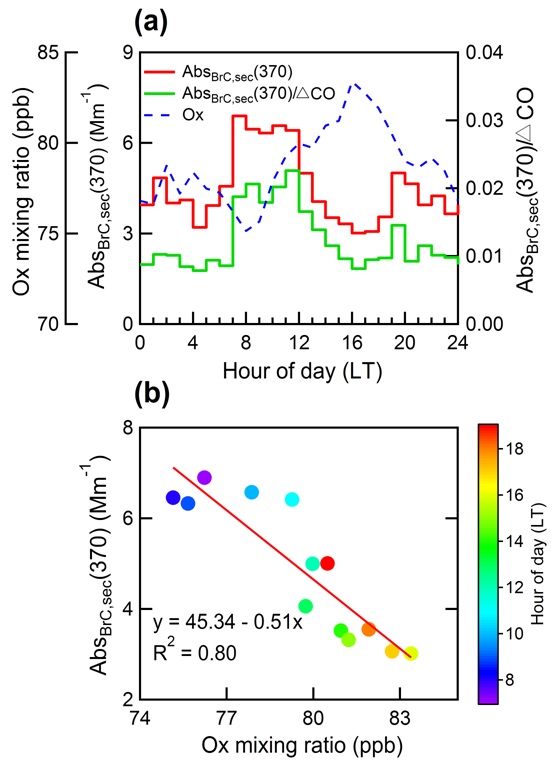Tibetan Plateau (TP) is the world’s largest high-elevation region. It holds the largest ice mass on the planet outside the polar regions and is called the Earth’s “Third Pole”. There is growing concern that glaciers on the TP are in retreat, due in part to the influence of light-absorbing carbonaceous aerosol.
Brown carbon (BrC), a group of colored organic aerosol, can efficiently absorb sunlight from near-ultraviolet to visible wavelengths. It accounts for ~20–40% of the total carbonaceous aerosol absorption and causes radiative effects globally.
Understanding the light absorptivity and sources of BrC is important for assessing the climate effects on the TP. Scientists from Institute of Earth Environment (IEE) of the Chinese Academy of Sciences and their colleagues conducted intensive measurements from March to May 2018 over the southeastern margin of TP.
They used a black carbon (BC)-tracer method combined with a minimum R-squared (MRS) approach to separate the light absorption of primary BrC from that of secondary. The secondary BrC absorption accounted for 68–91% of the total BrC absorption, suggesting the dominant contribution from secondary sources for the southeastern margin of TP.
The diurnal cycle of secondary BrC absorption showed a rapid increase in secondary BrC formation after sunrise, whereas the light-absorbing chromophores were photobleached as a result of photo-oxidation processes in the afternoon.
A concentration-weighted trajectory analyses combined with a positive relationship between secondary BrC absorption and number of fire counts showed that biomass-burning-related secondary BrC from northern Burma and Sino-Burmese border was an important source for BrC over the southeastern margin of TP.
A “simple forcing efficiency” (SFE, watts per gram) method showed that the integrated mean SFE of secondary BrC in the solar spectral range of 370-880 nm was 79 W/g and that accounted for 75% of total BrC SFE during the study.
Results obtained from the Tropospheric Ultraviolet and Visibility radiation model showed that secondary BrC absorption in the near-UV range of 370-400 nm may decrease the NO2 photolysis rate by 4%, and therefore, BrC evidently can influence the atmospheric photochemistry in the southeastern margin of TP.
This study should be useful for further improving models and accurately evaluating the effects of BrC on glacial recession on the TP. It is published in Geophysical Research Letters.

Fig.1 (a) Diurnal variations (local time [LT]) of secondary brown carbon (BrC) absorption at λ = 370 nm (AbsBrC,sec(370)), AbsBrC,sec(370)/ (background‐corrected CO, ΔCO), and odd oxygen (Ox = NO2 + O3) mixing ratios and (b) the relationship between AbsBrC,sec(370) and Ox during the daytime.(Imaged by WANG Qiyuan, et al.)
Contact: Bai Jie, Institute of Earth Environment, Chinese Academy of Sciences, Xi'an, China. Email: baijie@ieecas.cn
 © 2015 Institute of Earth Environment,CAS
© 2015 Institute of Earth Environment,CAS Address:No. 97 Yanxiang Road, Xi'an 710061, Shaanxi, China

 Location :
Location :